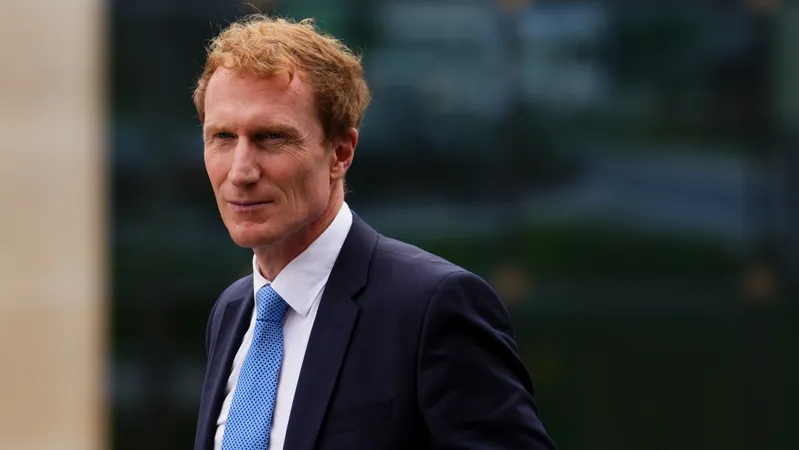
Putin Unveils Controversial New Nuclear Doctrine Amid Heightened Tensions with the West
2024-11-19
Author: Amelia
In a significant escalation of military rhetoric, President Vladimir Putin officially endorsed a revised nuclear doctrine on Tuesday, marking a pivotal moment in Russia's defense strategy. The new doctrine asserts that any conventional attack on Russia backed by nuclear powers will be viewed as a collaborative assault against the nation, heightening fears of a broader conflict.
This announcement coincides precisely with the 1,000th day since the onset of Russia's military campaign in Ukraine on February 24, 2022. The revised nuclear stance follows a provocative decision from U.S. President Joe Biden to permit Ukraine to target locations within Russia using longer-range missiles supplied by the United States—an action that has drawn sharp condemnation from Moscow.
The new doctrine states that a large-scale aerial assault on Russia, regardless of the attacking party's nuclear status, could provoke a nuclear response. This chilling directive underscores Putin's commitment to using Russia's nuclear capabilities as leverage against Western nations as his military struggles to gain ground in Ukraine.
Kremlin spokesperson Dmitry Peskov responded to queries regarding the timing of the doctrine's release, asserting that it was necessary and aligned with current geopolitical dynamics. He noted that Putin had previously instructed government officials to revise the doctrine to reflect ongoing developments.
The nuclear doctrine had first been hinted at in September during a Kremlin meeting led by Putin, where the need for enhancements to Russia's nuclear strategy was discussed. Notably, the updated guidance specifies that any attack on Russia by non-nuclear countries, especially with support from nuclear states, would be classified as a "joint attack" on the Russian Federation. This language reflects an increasingly aggressive posture towards NATO and its member states.
Moreover, the doctrine articulates that Russia may resort to nuclear weapons not only in response to direct nuclear strikes but also against conventional attacks that threaten the nation’s sovereignty and territorial integrity, including that of its ally, Belarus. This vague phrasing allows for broad interpretations, intensifying concerns over what actions might trigger a nuclear response.
Interestingly, the latest document expands on previous declarations by incorporating more specific conditions under which nuclear weapons might be deployed. The guidelines now encompass potential responses to massive aerial assaults involving various military platforms, including drones and cruise missiles, suggesting a significant broadening in the scenarios that could lead to nuclear engagement.
Belarusian President Alexander Lukashenko, a long-time ally of Putin, has also played a role in this crisis, allowing Russian troops to operate from here and facilitating the deployment of Russian tactical nuclear weapons on Belarusian soil.
Since the commencement of the Ukraine invasion, threats from Moscow regarding its nuclear capabilities have surged, aimed at dissuading Western nations from increasing military support to Ukraine. Analysts have observed that voices within the Russian government have been pushing for a more stringent nuclear doctrine, arguing that previous iterations failed to adequately deter Western assistance to Kyiv.
As the situation continues to evolve, the implications of this revised nuclear doctrine raise alarms across the globe: Are we witnessing a new, perilous chapter in the international standoff between Russia and the West? Only time will tell how these escalating tensions influence the fragile security landscape in Europe.









 Brasil (PT)
Brasil (PT)
 Canada (EN)
Canada (EN)
 Chile (ES)
Chile (ES)
 España (ES)
España (ES)
 France (FR)
France (FR)
 Hong Kong (EN)
Hong Kong (EN)
 Italia (IT)
Italia (IT)
 日本 (JA)
日本 (JA)
 Magyarország (HU)
Magyarország (HU)
 Norge (NO)
Norge (NO)
 Polska (PL)
Polska (PL)
 Schweiz (DE)
Schweiz (DE)
 Singapore (EN)
Singapore (EN)
 Sverige (SV)
Sverige (SV)
 Suomi (FI)
Suomi (FI)
 Türkiye (TR)
Türkiye (TR)